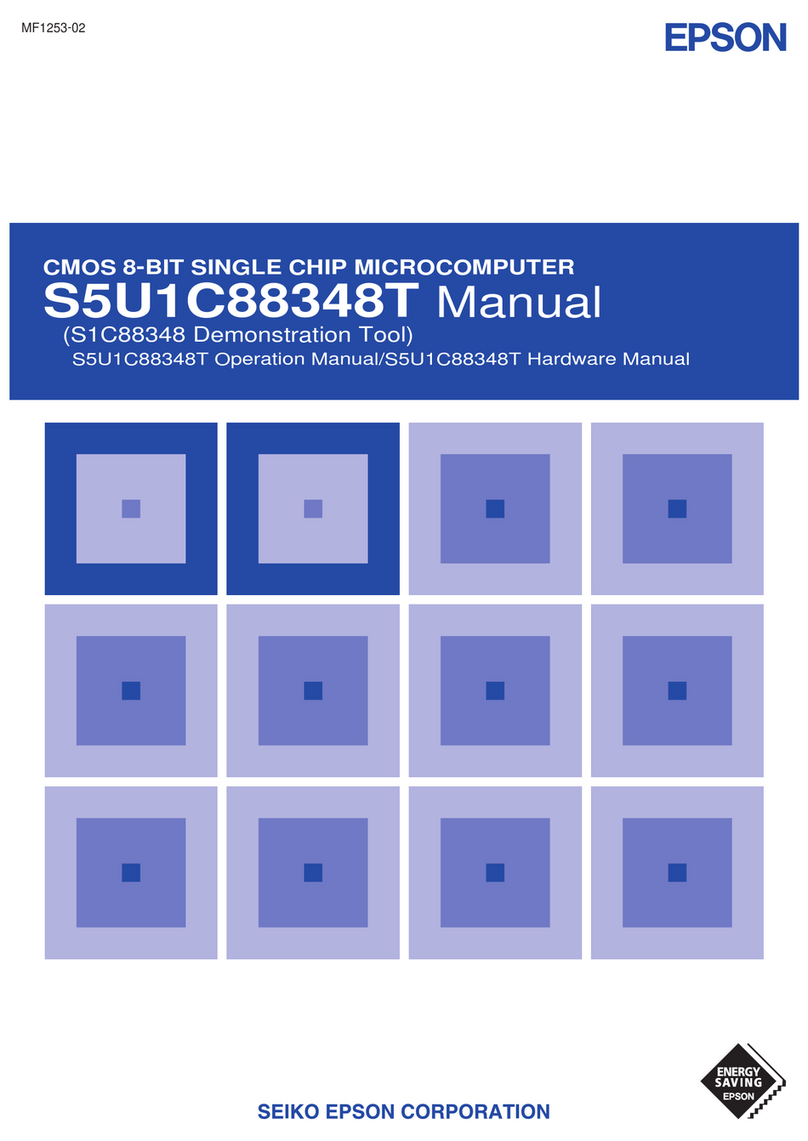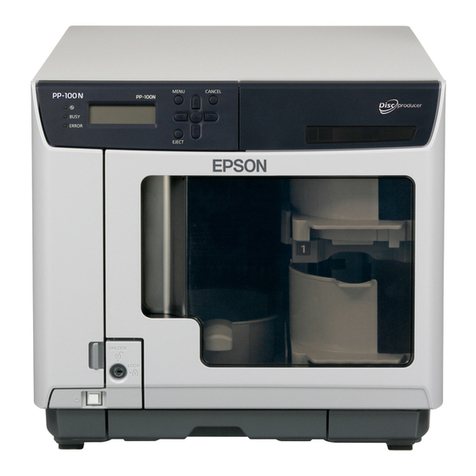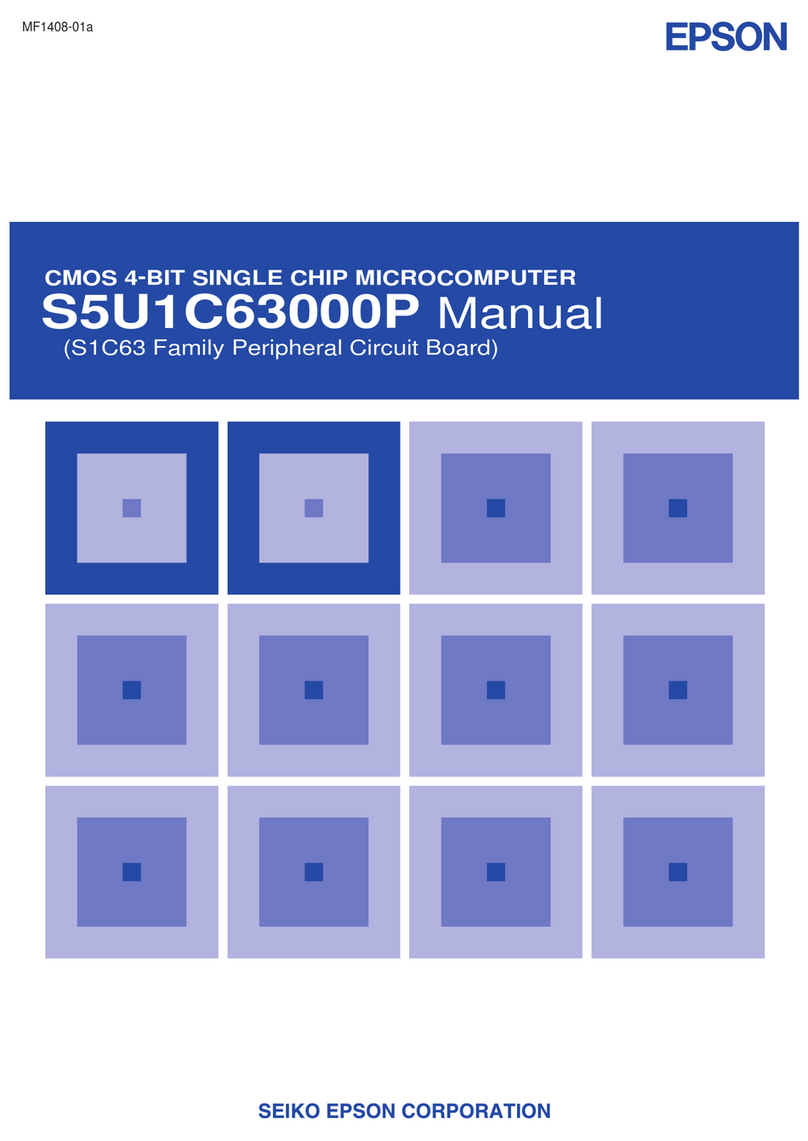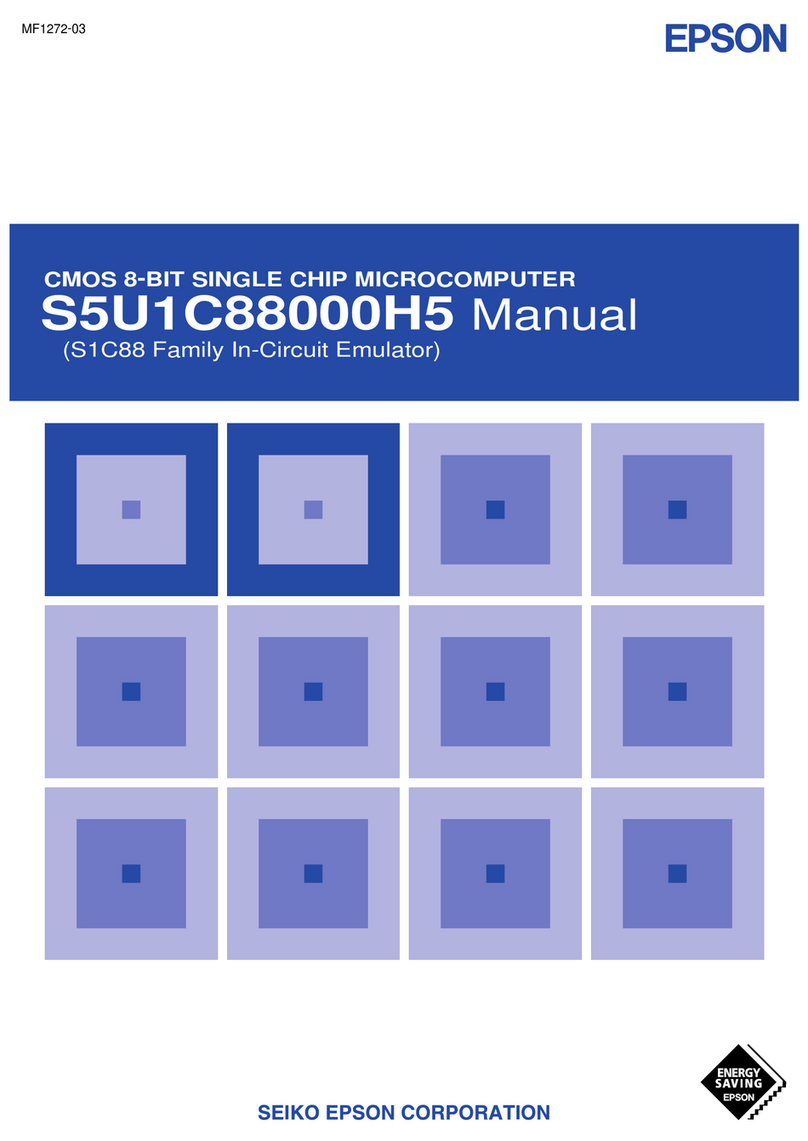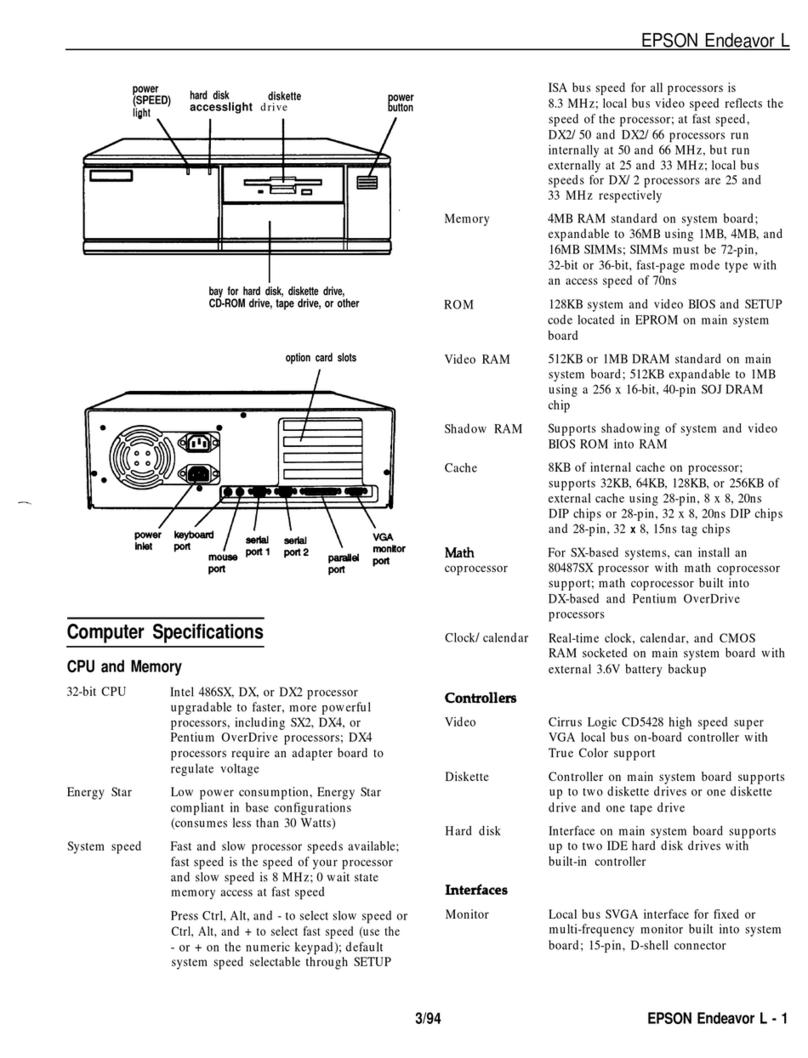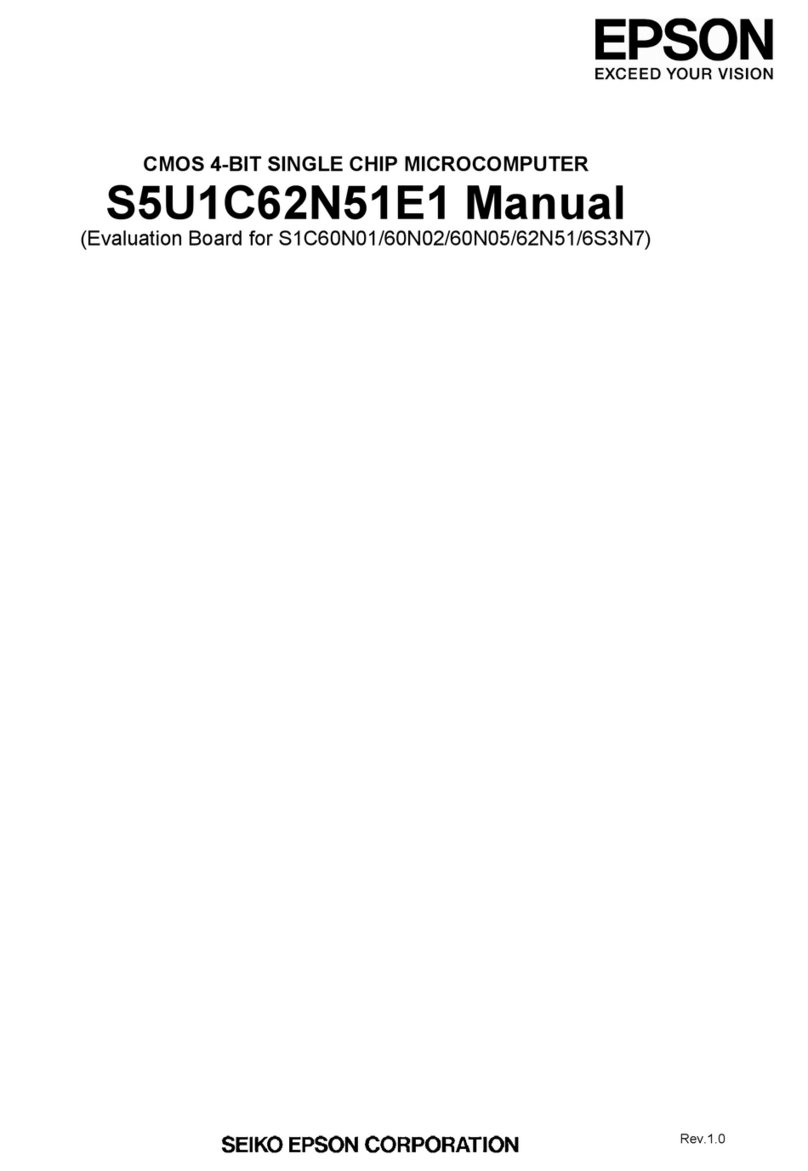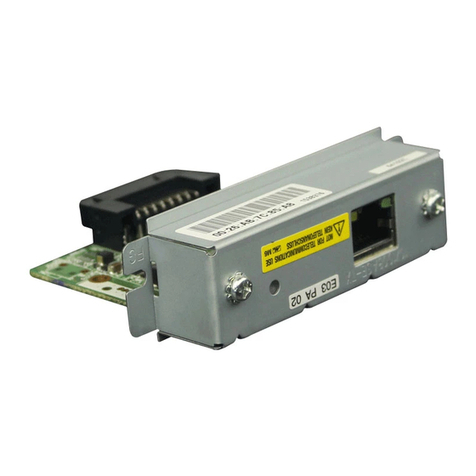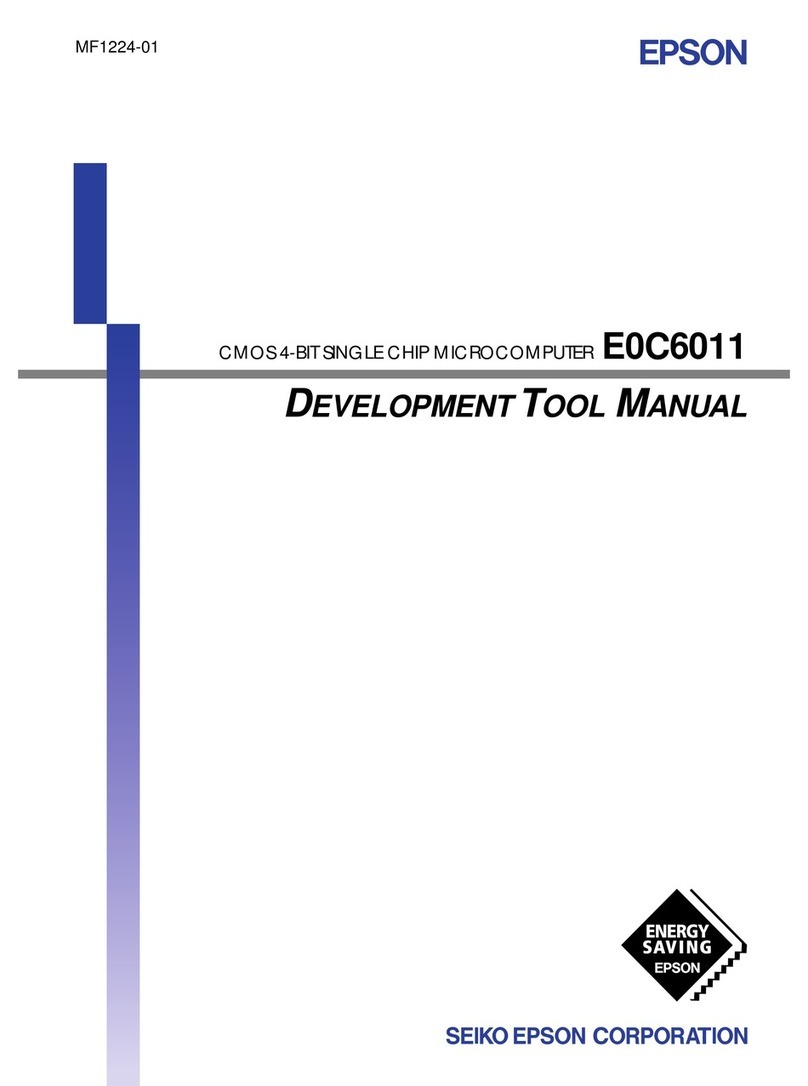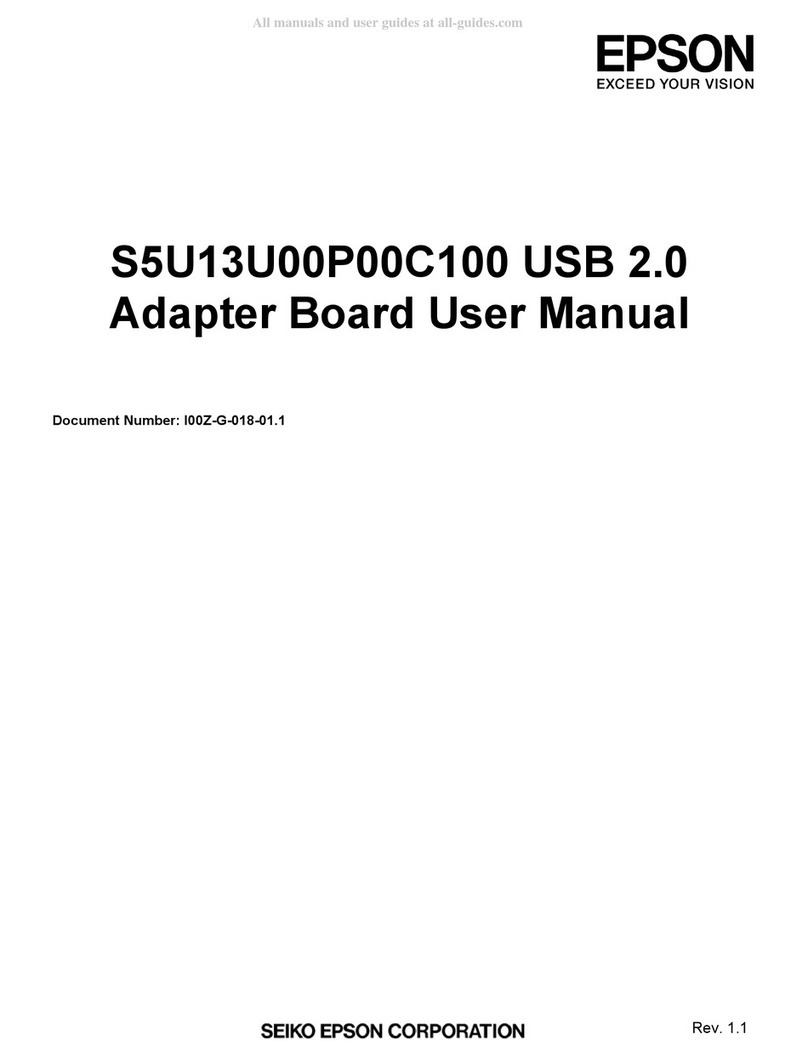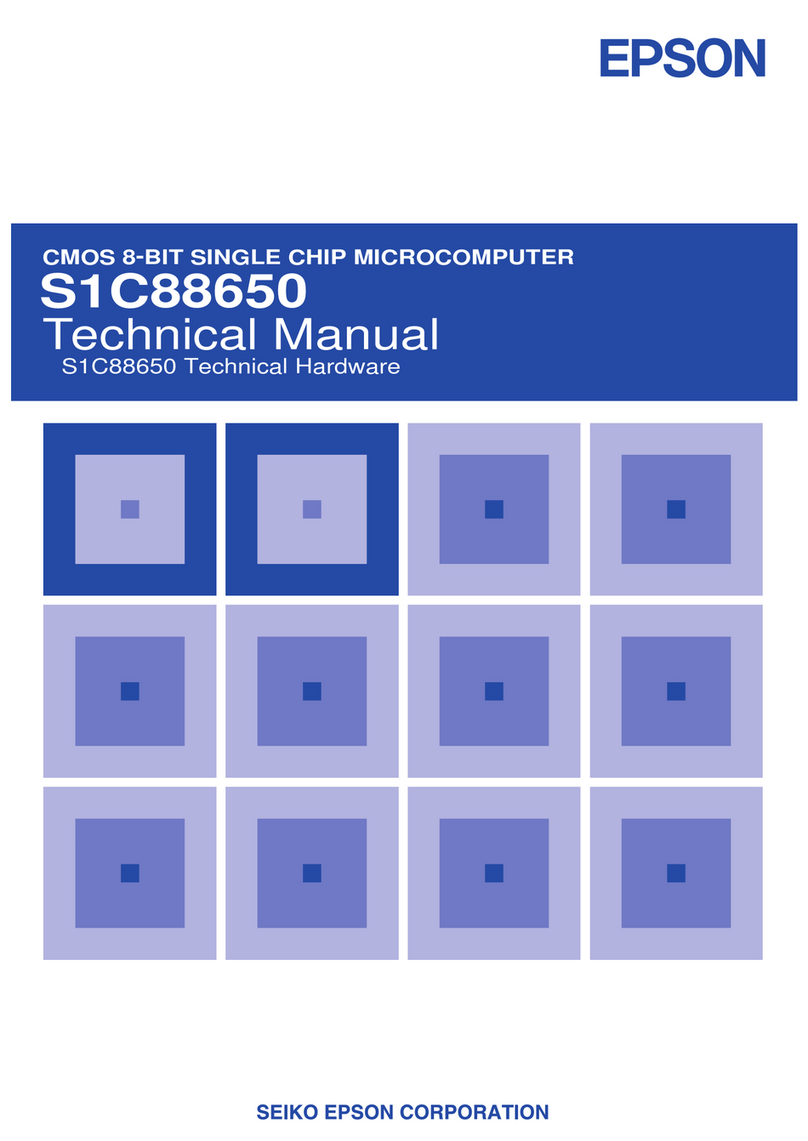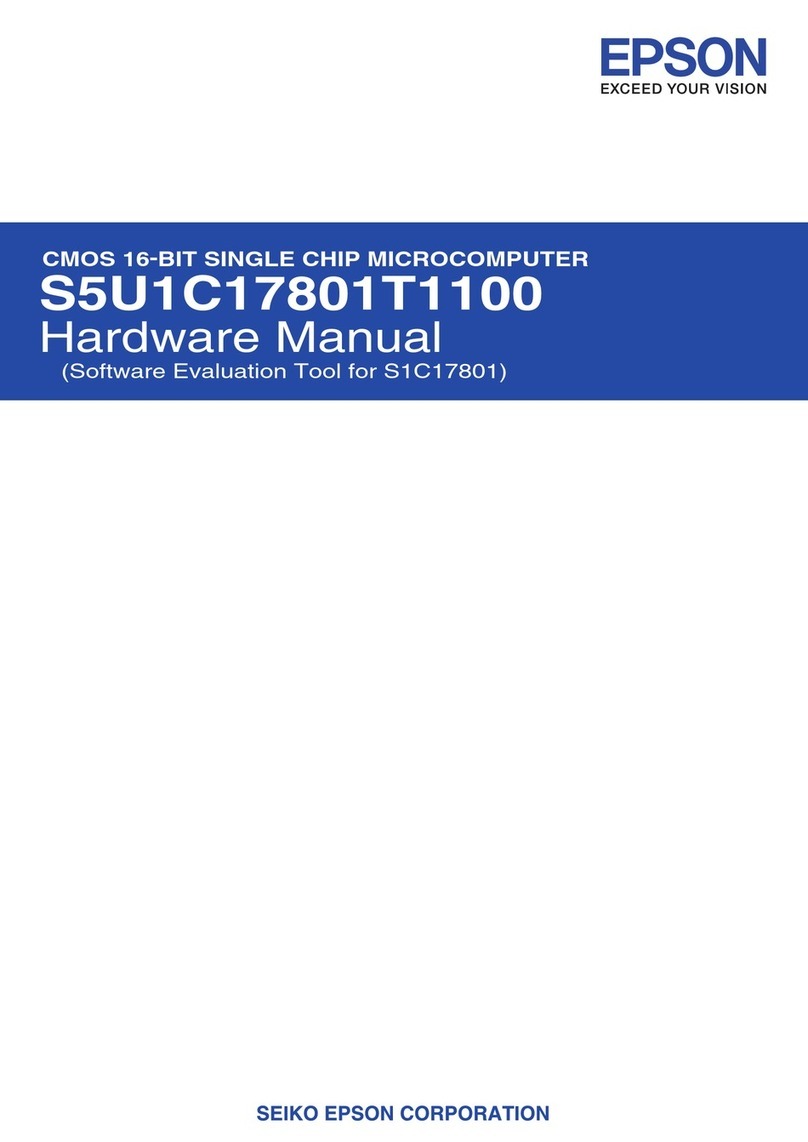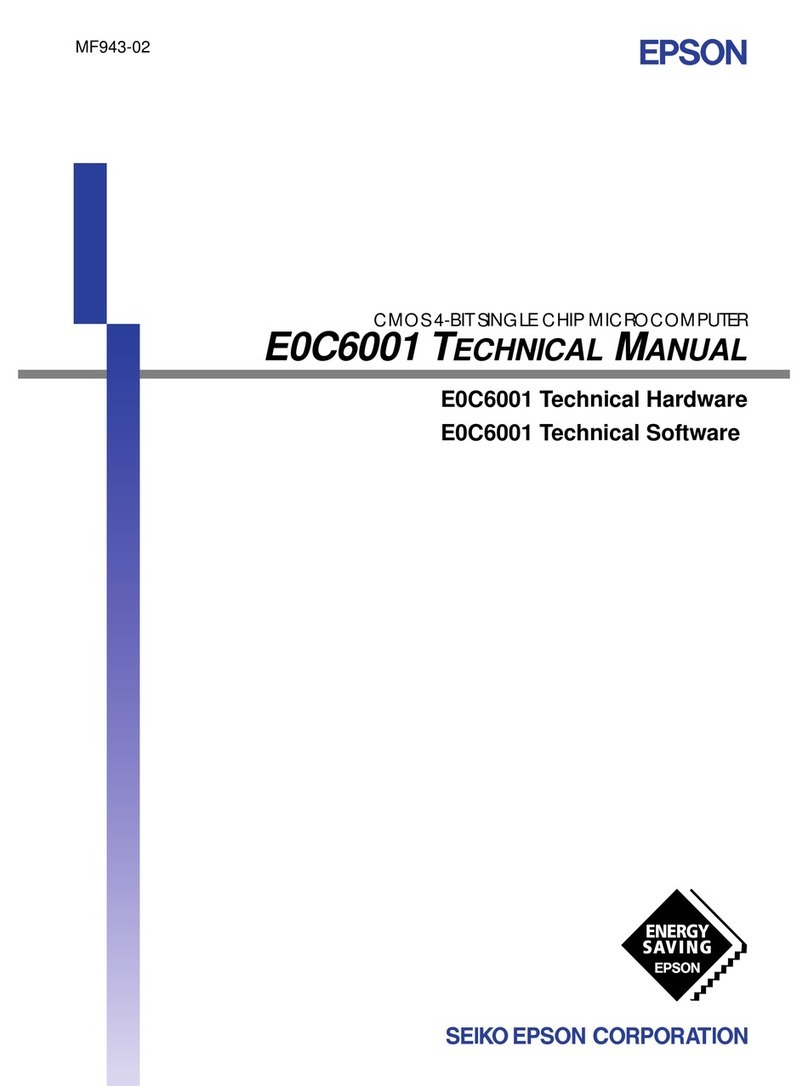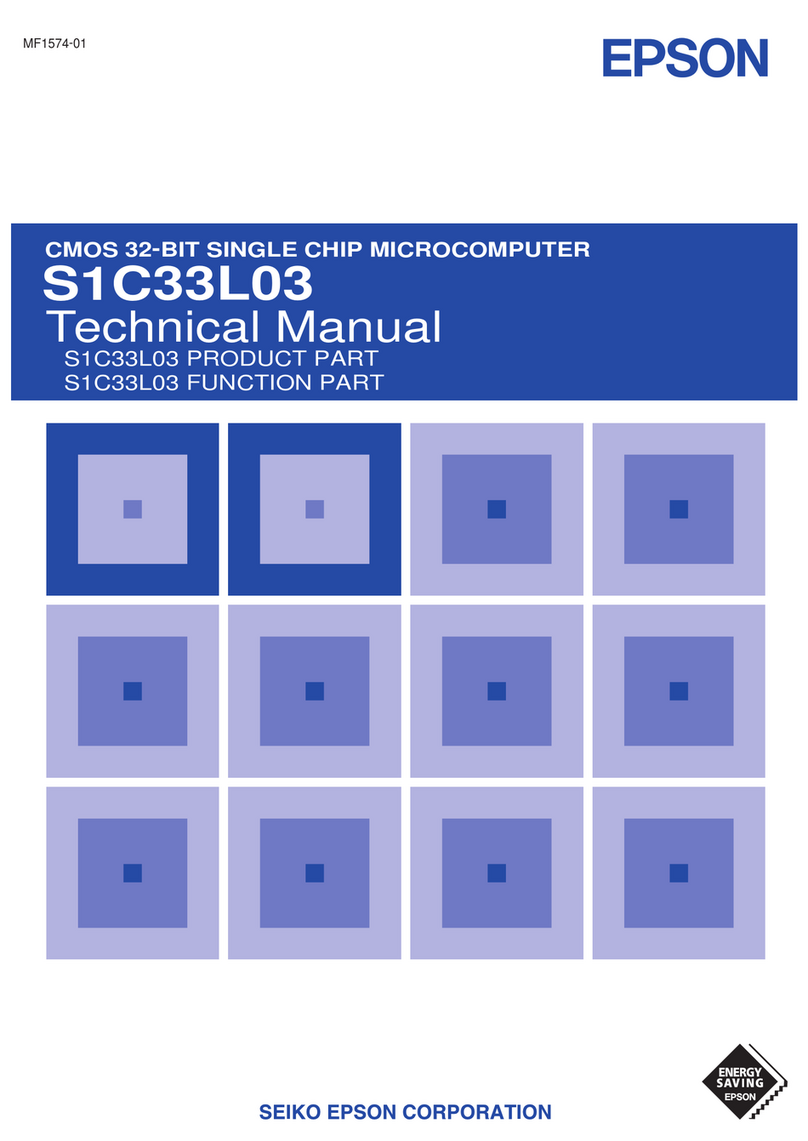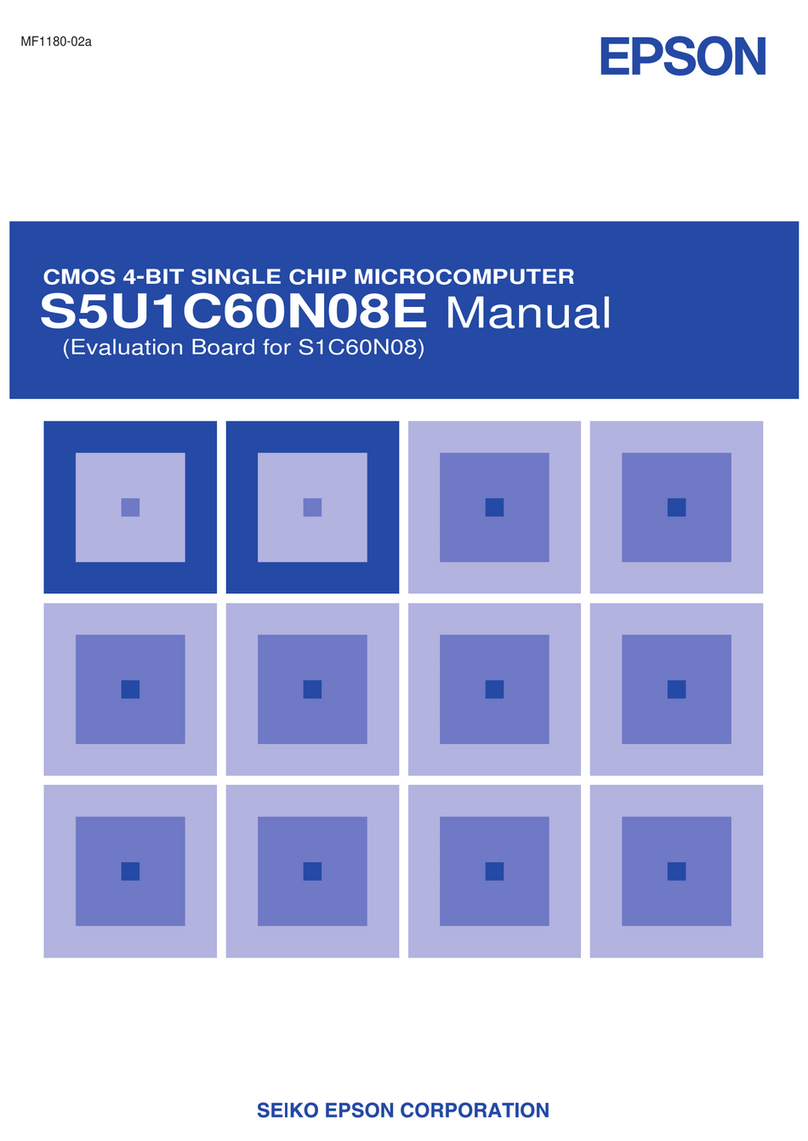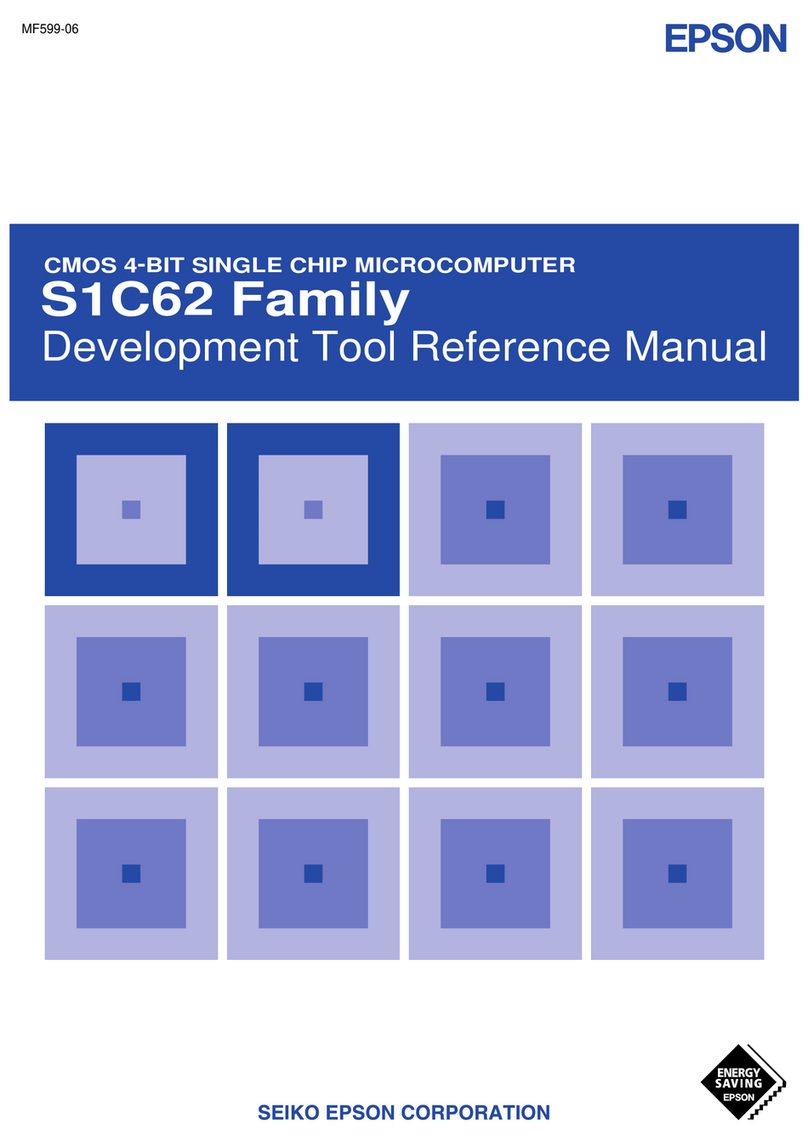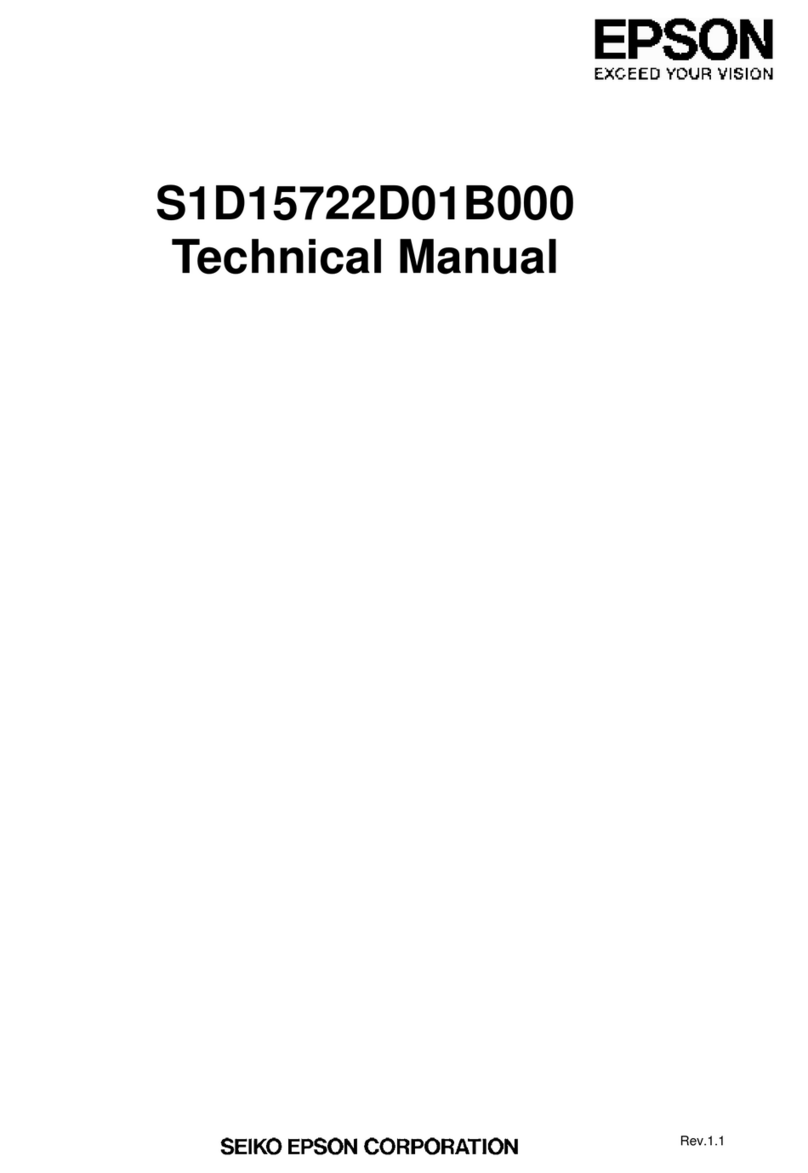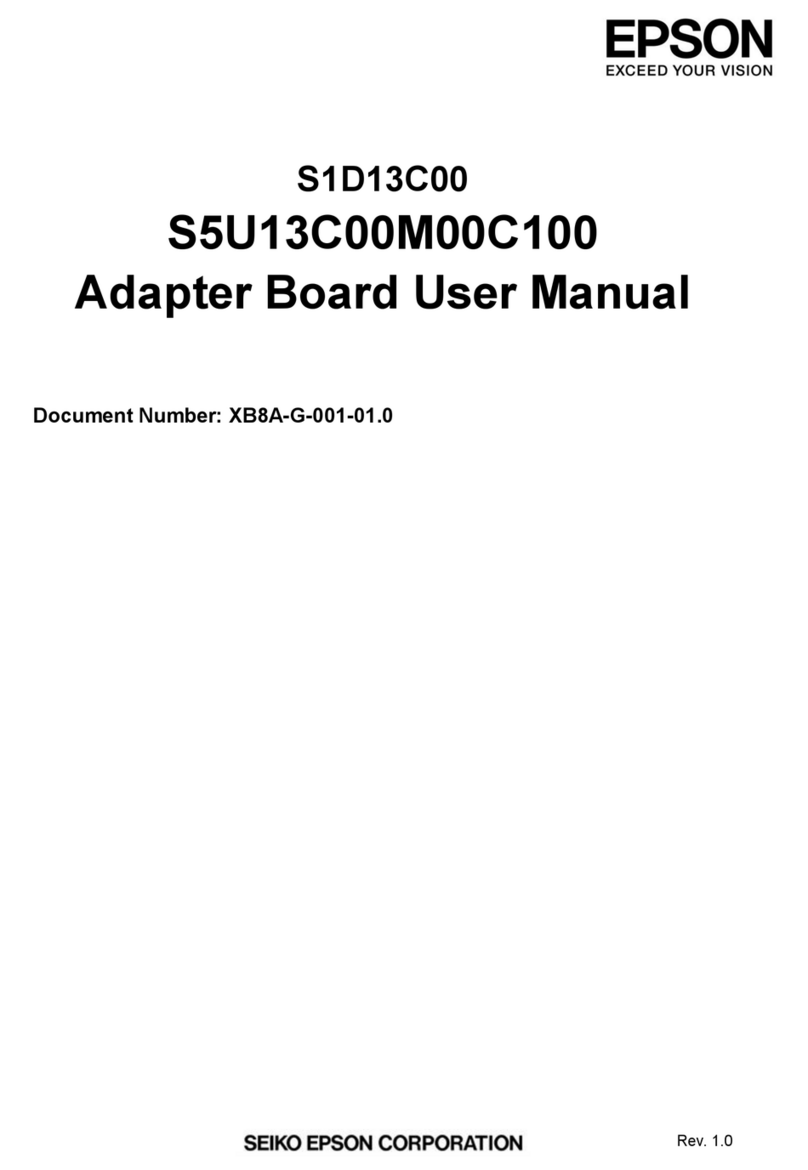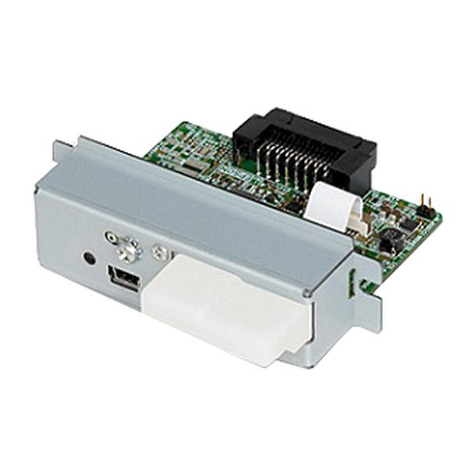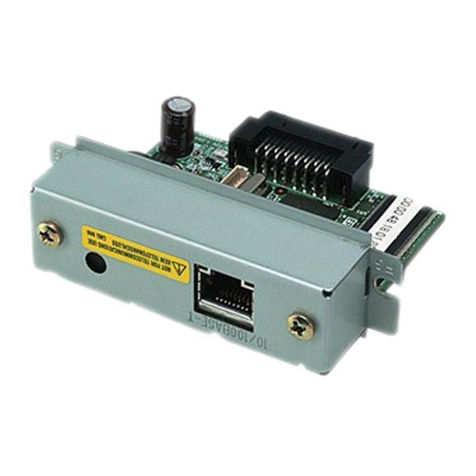
2 CROSS ASSEMBLER ASM6008
4EPSON S5U1C60N08D MANUAL
(DEVELOPMENT SOFTWARE TOOL FOR S1C60N08)
2 CROSS ASSEMBLER ASM6008
2.1 ASM6008 Outline
The ASM6008 cross assembler is an assembler program
for generating the machine code used by the S1C60N08
4-bit, single-chip microcomputers. The Cross Assembler
ASM6008 will assemble the program source files which
have been input by the user's editor and will generate
an object file in Intel-Hex format and assembly list file.
In this assembler, program modularization has been
made possible through macro definition functions and
programming independent of the ROM page structure
has been made possible through the auto page set
function. In addition, consideration has also been given
to precise error checks for program capacity (ROM
capacity) overflows, undefined codes and the like, and
for debugging of such things as label tables for assembly
list files and cross reference table supplements.
2.2 S1C60N08 Restrictions
Note the following when generating a program by the S1C60N08:
Fig. 2.1.1 ASM6008 execution flow
☞
The format of the source file and its operating method are same as for the S1C62 Family. Refer to the
"S1C62 Family Development Tool Reference Manual" for details.
■ROM area
The capacity of the S1C60N08
ROM is 4k steps (0000H to
0FFFH).
Therefore, the specification
range of the memory setting
pseudo-instructions and PSET
instruction is restricted.
Memory configuration:
Bank: Only bank 0, Page: 16 pages (0 to 0FH), each 256 steps
Significant specification range:
ORG pseudo-instruction: 0000H to 0FFFH
PAGE pseudo-instruction: 00H to 0FH
BANK pseudo-instruction: Only 0H
PSET instruction: 00H to 0FH
■RAM area
The capacity of the S1C60N08 RAM is 832 words (000H to 3FFH, 4 bits/word).
However, note the following points when programming.
(1) When 040H–06FH has been specified as the segment data memory through the mask option, 240H–
2CFH and 2D1H–2DFH become unused areas. Memory access is invalid when this unused area is
specified.
(2) When 240H–26FH has been specified as the segment data memory through the mask option, 270H–
2CFH and 2D1H–2DFH become unused areas. Memory access is invalid when this unused area is
specified.
(3) Since RAM is set for up to 4 pages, only the subordinate 2 bits of the page section of the index
register which specifies address are effective. (The 2 superordinate bits are ignored.)
Example: LD A,04H
LD XP,A
LD X,9FH
A>EDLIN C008XXX.DAT
Create the source file
A>ASM6008 C008XXX
Execute the cross assembler
C008XXX
.DAT
C008XXX
.PRN C008XXXL
.HEX C008XXXH
.HEX
Error
message
Error
message
Assembly
listing file Object file
49FH is loaded into the IX register, but an unused area has been specified
so that the memory accessible with the IX register (MX) is invalid.
■Undefined codes
The SLP instruction has not been defined in the S1C60N08 instruction sets.
